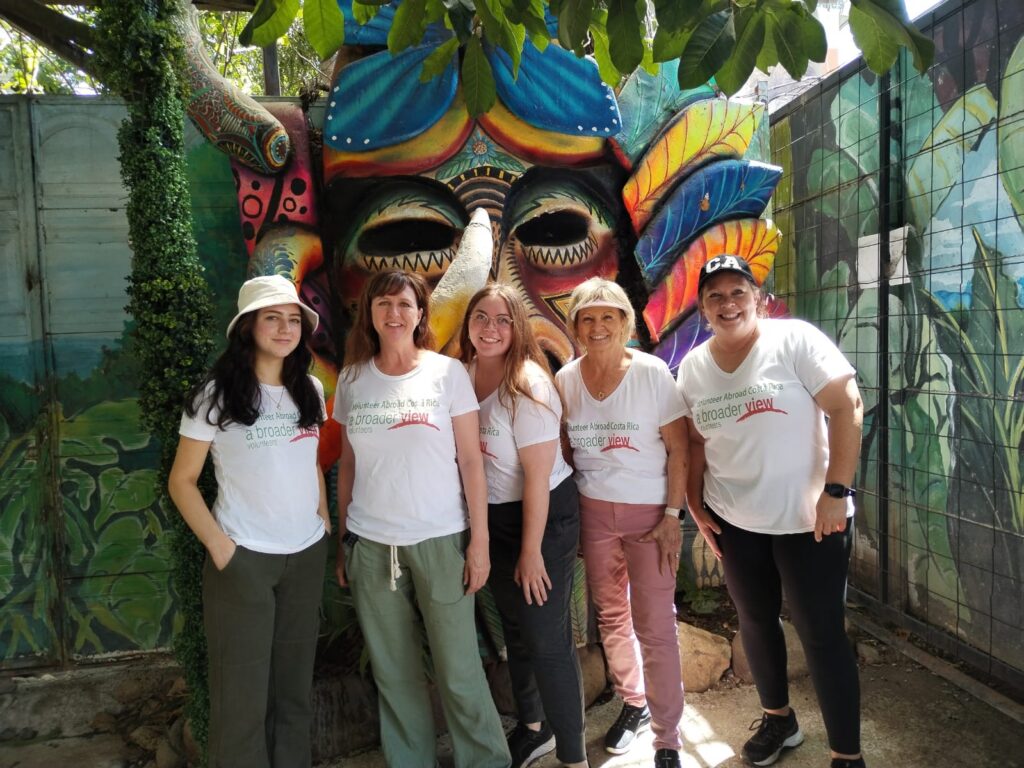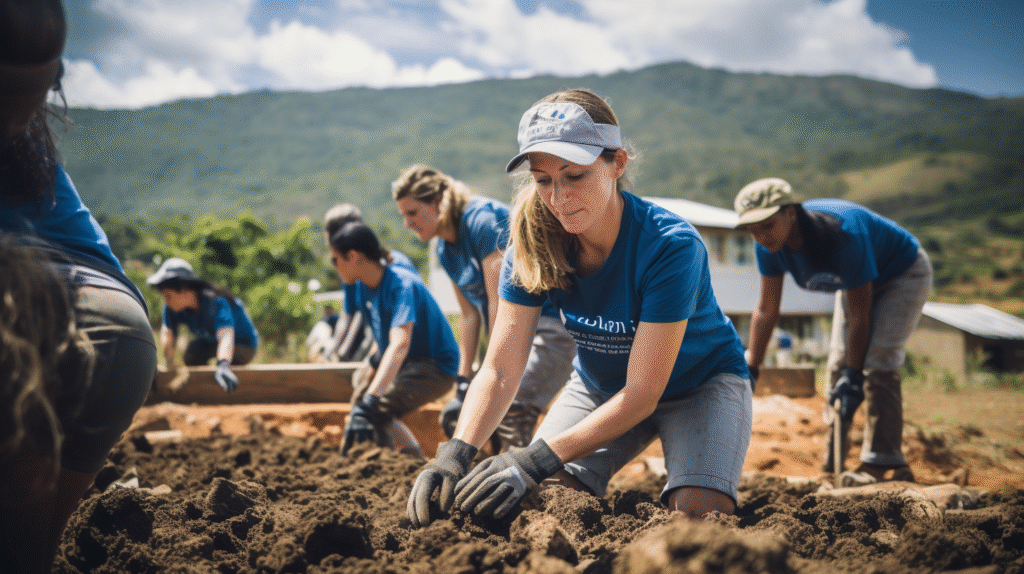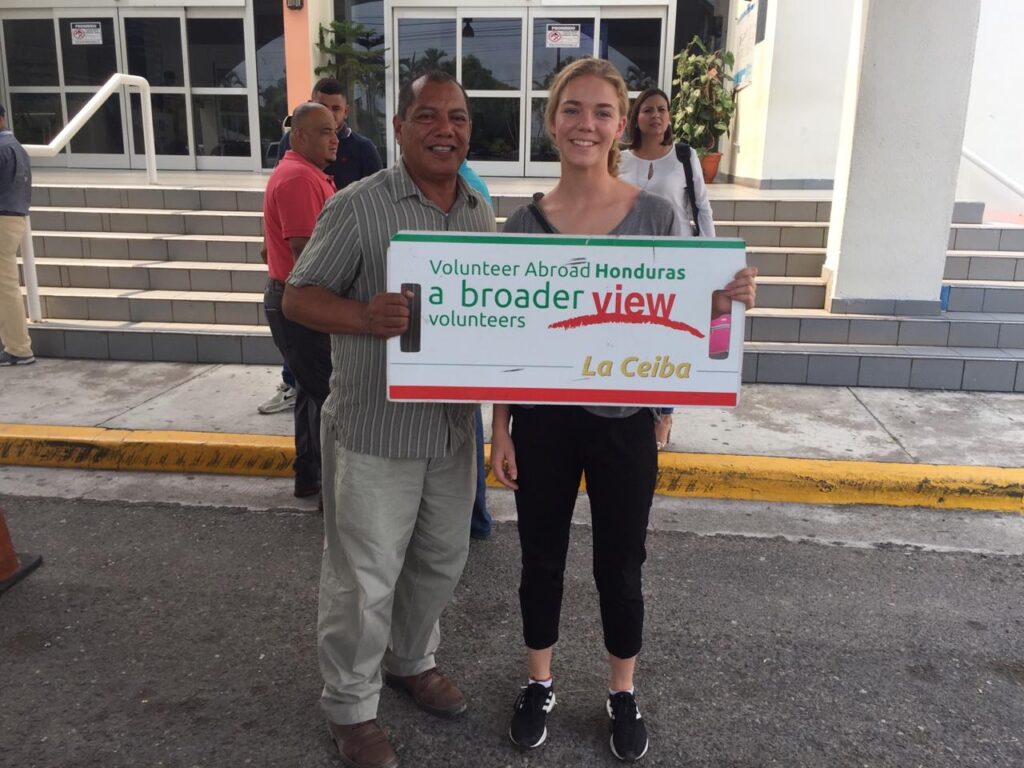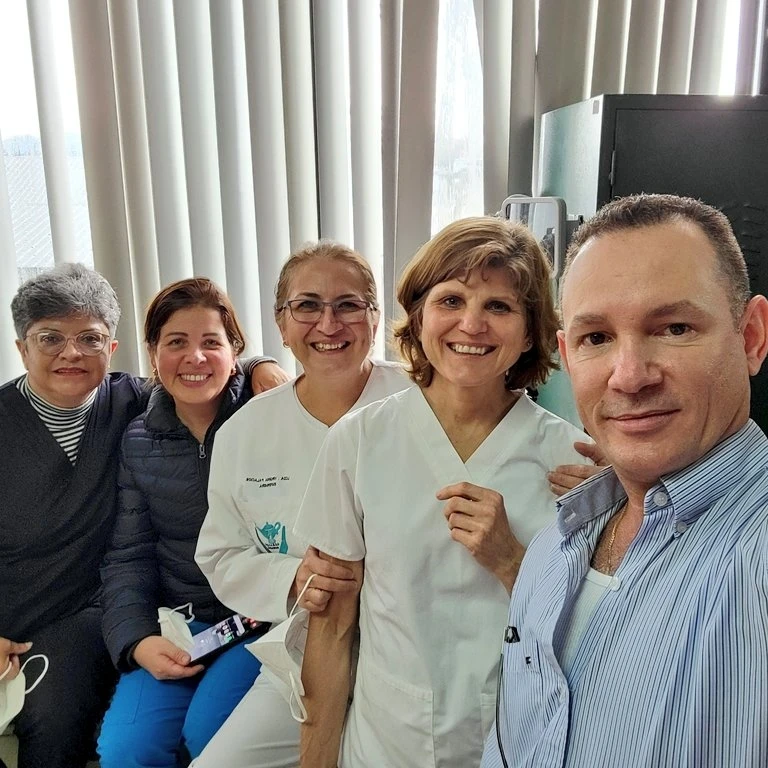Welcome! Today, we’re going to dive into the world of sustainable community development and explore the impactful projects spearheaded by an organization called A Better Vision (ABV).
Community development is all about creating positive change in communities while ensuring that the progress is long-lasting and sustainable. ABV’s approach to community development is not only effective but also takes into account the needs and aspirations of the local communities they work with.
So, let’s embark on this journey of understanding how ABV’s sustainable projects are making a real difference in communities around the world. We’ll explore how ABV defines sustainable development, the importance of community involvement, and ABV’s unique approach to project planning and implementation.

We’ll also take a look at some inspiring examples of ABV’s sustainable projects, how they measure their impact, and their strategies for long-term sustainability.
Buckle up and get ready to be inspired, because ABV’s commitment to sustainable community development is truly remarkable. Let’s begin by defining what sustainable development is all about!
Understanding Sustainable Community Development
Defining Sustainable Development
Sustainable community development refers to a holistic approach to creating thriving communities that meet the needs of the present without compromising the ability of future generations to meet their own needs. It involves integrating environmental, social, and economic considerations to promote long-term sustainability.
In the context of community development, sustainability means focusing on:
- Environmental stewardship: Minimizing the negative impacts on the environment and promoting conservation efforts.
- Social equity: Ensuring that the benefits of development are distributed equitably among community members, without leaving anyone behind.
- Economic viability: Supporting economic activities that generate income and improve the overall well-being of the community.
Sustainable development aims to strike a balance between these three pillars, recognizing that they are interconnected and depend on each other for long-term success.
Importance of Community Involvement
One key aspect of sustainable community development is the active involvement of community members. Engaging the community in the decision-making processes and implementation of development projects fosters a sense of ownership and empowerment. It allows community members to actively participate in shaping their own future.
By involving the community, sustainable projects can:
- Address local needs: Community involvement ensures that project initiatives align with the specific needs and aspirations of the people who will benefit from them.
- Build local capacity: Involving community members in project planning and implementation helps develop their skills, knowledge, and leadership abilities, creating a foundation for long-term sustainability.
- Promote social cohesion: Collaborative efforts create opportunities for community members to come together, share ideas, and develop stronger social bonds.

Ultimately, sustainable community development is not just about improving living conditions; it is about empowering communities to become self-reliant, resilient, and capable of driving their own development. It is a bottom-up approach that values local knowledge, promotes participation, and seeks to create lasting positive impacts.
“Sustainable development is the pathway to the future we want for all. It offers a framework to generate economic growth, achieve social justice, exercise environmental stewardship, and strengthen governance.” – Ban Ki-moon
ABV’s Approach to Sustainable Community Development
At A Broader View (ABV), sustainable community development is at the heart of our mission. We believe that true change happens when local communities are actively involved in the development process. So, how do we approach sustainable community development? Here are the key elements of ABV’s approach:
Collaborative Project Planning
We understand that sustainable change requires collaboration and input from various stakeholders. That’s why we involve the local community in every step of the project planning process. We work closely with community leaders, local organizations, and residents to identify their needs and prioritize the most impactful projects.
Evaluating Environmental Impact
Environmental sustainability is a crucial aspect of our projects. We conduct thorough assessments to ensure that our initiatives are ecologically responsible. From reducing our carbon footprint to promoting waste management practices, we aim to make a positive impact on the environment.
Empowering Local Communities
We believe in empowering local communities by equipping them with the knowledge, skills, and resources they need for long-term sustainability. Through capacity building programs and training initiatives, we enable community members to take ownership of their development projects. This promotes self-sufficiency and ensures that the positive impact of our projects continues even after our volunteers leave.
“ABV’s approach to sustainable community development is built on collaboration, environmental responsibility, and empowering local communities”
Now, let’s take a look at some examples of ABV’s sustainable projects.
Examples of ABV’s Sustainable Projects
Clean Water and Sanitation Initiatives
One of the key areas of focus for ABV’s sustainable projects is clean water and sanitation. Access to clean water is essential for the health and well-being of a community, and ABV works to ensure that communities have safe and reliable sources of water. Here are some examples of ABV’s clean water and sanitation initiatives:
- Installation of Water Filtration Systems: ABV installs water filtration systems in communities where clean water is scarce. These systems remove impurities and contaminants from the water, making it safe for drinking and cooking. This not only improves the health of the community members but also reduces the risk of waterborne diseases.
- Construction of Sanitation Facilities: ABV also focuses on improving sanitation facilities in communities. They construct latrines, handwashing stations, and bathing areas, ensuring that community members have access to hygienic facilities. This helps in preventing the spread of diseases and promoting good hygiene practices.
- Educating the Community: In addition to infrastructure development, ABV also conducts awareness programs to educate the community about the importance of clean water and proper sanitation. They teach community members about proper hygiene practices, such as handwashing and waste management, to further promote a healthy and clean environment.

Education and Skill Development Programs
Education is a key driver of community development, and ABV works towards providing access to quality education and skill development programs. Here are some examples of ABV’s education and skill development initiatives:
- Building Schools and Libraries: ABV helps in the construction of schools and libraries in underserved communities. These facilities provide a conducive learning environment for children and adults alike. They are equipped with educational resources such as books, computers, and learning materials, enabling community members to enhance their knowledge and skills.
- Teacher Training Programs: ABV also conducts teacher training programs to improve the quality of education. They provide training to local teachers, empowering them with effective teaching methodologies and classroom management techniques. This ensures that students receive a quality education and have access to competent educators.
- Skills Training Workshops: ABV organizes workshops and training programs to equip community members with practical skills. These workshops cover various areas such as vocational skills, entrepreneurship, and agricultural techniques. By providing individuals with the necessary skills, ABV helps them gain employment or start their own businesses, contributing to the economic growth of the community.
Economic Empowerment Projects
Sustainable community development also involves empowering communities economically. ABV’s economic empowerment projects aim to create opportunities for income generation and financial stability. Here are some examples of ABV’s economic empowerment initiatives:
- Microfinance and Small Business Development: ABV supports the establishment of microfinance initiatives and helps individuals start small businesses. They provide access to capital, training, and mentorship, enabling community members to become self-sufficient and financially independent. This not only boosts the local economy but also empowers individuals and their families.
- Agricultural Development: ABV promotes agricultural development as a means of economic empowerment. They provide training and resources to improve agricultural practices, increase crop yields, and diversify income sources. By investing in sustainable agriculture, ABV helps communities become more resilient to climate change and achieve food security.
- Market Access and Value Chain Development: ABV works on creating market linkages and value chains for community products. They connect communities with larger markets, helping them sell their products at fair prices and generate income. This not only stimulates economic growth but also preserves traditional crafts and promotes cultural heritage.
These examples demonstrate ABV’s commitment to sustainable community development across different sectors. By addressing the vital needs of clean water, education, and economic empowerment, ABV is making a lasting impact on the lives of community members.
Measuring the Impact of ABV’s Projects
One of the key aspects of sustainable community development is measuring the impact of projects. How do we know if the initiatives put in place are making a difference? That’s where evaluation and assessment come in. As a volunteer organization, A Broader View Volunteer (ABV) understands the importance of measuring the impact of their projects to ensure they are creating meaningful and long-lasting change.

Quantitative Analysis
Quantitative analysis involves using numerical data to assess the impact of projects. ABV collects data on various indicators to measure the effectiveness of their initiatives. This data helps to provide tangible evidence of the project’s impact and allows for comparisons over time. Some key indicators that ABV focuses on include:
- Number of beneficiaries: ABV tracks the number of individuals who benefit from their projects, whether it’s access to clean water, education programs, or economic empowerment initiatives. This helps to demonstrate the reach of their projects and the number of lives affected.
- Improved metrics: ABV looks at specific metrics related to their projects to assess improvements. For example, in clean water and sanitation initiatives, they may measure the number of households with improved access to clean water sources or the reduction in waterborne diseases in the community.
- Economic growth: In economic empowerment projects, ABV evaluates the impact on local economies. They track indicators such as increased income, job creation, and the growth of local businesses as a result of their initiatives.
- Educational outcomes: When it comes to education and skill development programs, ABV looks at indicators such as school enrollment rates, literacy levels, and the acquisition of new skills by participants. This helps to determine the effectiveness of their efforts in providing educational opportunities.
Qualitative Assessment
While quantitative analysis provides valuable data, it may not capture the full extent of the impact of ABV’s projects. That’s where qualitative assessment comes in. Qualitative assessment involves gathering subjective information through interviews, surveys, and focus group discussions. This helps to gain insights into the experiences, perspectives, and changes in attitudes and behaviors resulting from the projects. Some methods of qualitative assessment used by ABV include:
- Interviews: ABV conducts interviews with community members, project participants, and stakeholders to understand their experiences and the impact of the projects on their lives.
- Surveys: Surveys are distributed to gather feedback from beneficiaries and assess their satisfaction levels with the projects. This helps ABV to understand the perceived impact and areas for improvement.
- Focus group discussions: ABV organizes focus group discussions where community members can share their thoughts, feedback, and suggestions. This allows for a more in-depth exploration of the project’s impact and community perspectives.
The Importance of Impact Measurement
Measuring the impact of projects is crucial for several reasons:
- Accountability: By measuring the impact, ABV is accountable to its donors, volunteers, and the communities they serve. It provides transparency on how their resources are being utilized and whether the intended outcomes are being achieved.
- Learning and Improvement: Impact measurement allows ABV to identify what works and what doesn’t. It helps them to learn from their experiences and make informed decisions for future projects. They can adapt their approaches and strategies based on the data and feedback collected.
- Communication and Fundraising: Demonstrating the impact of their projects through data and stories helps ABV to effectively communicate their work to stakeholders and potential donors. It showcases the value and effectiveness of their initiatives, which can attract further support and funding.
- Sustainability: Measuring the impact helps ABV to ensure that their projects are sustainable in the long run. It allows them to assess the effectiveness and relevance of their initiatives and make adjustments as needed to foster long-term positive change.

Measuring the impact of projects is an ongoing process for ABV. It helps them to continuously monitor and evaluate their efforts, ensuring that they are making a meaningful difference in the communities they work with. By using both quantitative analysis and qualitative assessment, ABV gains a comprehensive understanding of the impact of their projects, enabling them to create sustainable change.
Engaging the Community for Long-Term Sustainability
When it comes to sustainable community development, one of the key factors for success is engaging the community itself. In order to create long-lasting change and empower local residents, it is important to involve them in every step of the process. In this section, we will explore how ABV (A Better Volunteer) effectively engages the community for long-term sustainability.
Capacity Building and Training
One of the ways ABV engages the community is through capacity building and training programs. By providing valuable skills and knowledge to the local population, ABV ensures that the community has the tools it needs to thrive even after the project is completed. This could include workshops on topics like entrepreneurship, agriculture, healthcare, education, and more. It not only equips community members with skills but also fosters a sense of ownership and empowerment.
Promoting Local Leadership
Another important aspect of engaging the community is promoting local leadership. ABV believes that sustainability can only be achieved when the community takes ownership of the projects. By identifying and nurturing local leaders and creating opportunities for them to take charge, ABV ensures that the projects continue to thrive even when external assistance is no longer available. This approach builds resilience and fosters a culture of self-reliance within the community.
Fostering Collaboration
Collaboration plays a vital role in sustaining community development projects. ABV recognizes this and actively involves community members, local organizations, and other stakeholders in the decision-making process. By fostering collaboration, ABV ensures that projects address the community’s specific needs and aspirations. It also creates a sense of unity and shared responsibility, encouraging active participation and support from all involved parties.
By engaging the community, ABV creates a sense of ownership and empowerment, ensuring the long-term sustainability of its projects. Through capacity building and training programs, local leaders are equipped with the necessary skills and knowledge to lead and take ownership of the projects. Collaboration with community members and other stakeholders fosters a sense of unity and shared responsibility. Together, these efforts contribute to the overall success and impact of sustainable community development initiatives.

“Sustainability is not just about accomplishing short-term goals, but also about empowering the community to continue thriving long after external assistance is gone.”
Challenges and Lessons Learned
When it comes to sustainable community development, there are always challenges that organizations like ABV face. However, these challenges also provide valuable lessons that help shape their approach to future projects. Here are some key challenges and lessons learned from ABV’s experience:
Adapting to Cultural Contexts
One of the major challenges that ABV has encountered is the need to adapt their projects to the unique cultural contexts of the communities they work with. Each community has its own traditions, beliefs, and values that must be respected and taken into consideration. It is crucial to understand the local customs and traditions in order to effectively engage with the community and gain their trust.
Lesson Learned: ABV has learned that taking the time to listen to the community and understand their needs and preferences is essential. They have realized the importance of involving community members in the decision-making process and ensuring that their voices are heard. This approach helps to build rapport and trust, and leads to more successful and sustainable projects.
Ensuring Project Scalability
Another challenge that ABV has faced is ensuring that their projects have a lasting impact and can be scaled up to benefit a larger number of people. It is not enough to simply implement a project and move on – long-term sustainability requires careful planning and consideration of how the project can be replicated or expanded in the future.
Lesson Learned: ABV has learned that investing in capacity building and training is crucial for ensuring the long-term sustainability of their projects. By equipping community members with the knowledge and skills to continue and expand the project, ABV ensures that the impact extends beyond the duration of their involvement. This approach also empowers the community and fosters a sense of ownership and responsibility.

Monitoring and Evaluation
Monitoring and evaluating the impact of projects is another challenge that ABV has faced. Determining the effectiveness and success of a project requires rigorous data collection and analysis, as well as regular follow-up with the community. This can be time-consuming and resource-intensive, but it is essential for understanding what works and what doesn’t.
Lesson Learned: ABV has learned the importance of collecting both quantitative and qualitative data to assess the impact of their projects. Quantitative data, such as the number of people benefiting from a project or changes in key indicators, provides a measurable way to track progress. On the other hand, qualitative data, such as personal stories and testimonials, helps to capture the human element and provide a deeper understanding of the impact. By combining both types of data, ABV is able to paint a comprehensive picture of the project’s success and areas for improvement.
Overall, the challenges encountered by ABV in their sustainable community development projects have only strengthened their commitment to making a positive impact. By adapting to cultural contexts, ensuring project scalability, and conducting thorough monitoring and evaluation, ABV continues to learn and grow, improving their approach with each project. Through perseverance and dedication, they are able to create lasting change and empower communities to thrive.
Conclusion
In conclusion, sustainable community development is a crucial aspect of creating lasting, positive change in communities around the world. It involves a comprehensive approach that takes into account various factors such as environmental impact, community involvement, and long-term sustainability.
ABV’s approach to sustainable community development sets a great example for organizations looking to make a meaningful impact. By collaborating with local communities, carefully evaluating environmental impact, and empowering local individuals and groups, ABV ensures that their projects are effective and sustainable.
The examples of ABV’s sustainable projects, including clean water and sanitation initiatives, education and skill development programs, and economic empowerment projects, demonstrate the diverse range of efforts they undertake to improve the lives of individuals and communities.

Measuring the impact of these projects is essential to assess their effectiveness and make improvements where needed. ABV utilizes both quantitative analysis and qualitative assessment methods to gain a comprehensive understanding of the outcomes and impacts of their initiatives.
Engaging the community for long-term sustainability is a key aspect of ABV’s approach. Through capacity building and training, promoting local leadership, and fostering collaboration, ABV ensures that communities are equipped with the knowledge, skills, and resources to continue the projects even after ABV’s involvement ends.
However, the path to sustainable community development is not without challenges. Adapting to cultural contexts and ensuring project scalability require necessary adjustments and continuous learning. ABV has learned valuable lessons in navigating these challenges and continues to improve their approach.
Overall, ABV’s commitment to sustainable community development has made a significant impact on the communities they work with. By focusing on collaboration, environmental impact, and community empowerment, ABV ensures that their projects are not just effective in the short term, but also contribute to the long-term well-being and sustainability of the communities they serve.
If you are looking to contribute to sustainable community development or learn more about ABV’s projects, reach out to them and get involved. Together, we can create a better and more sustainable future for communities around the world.
Frequently Asked Questions
- What is ABV’s approach to community development through sustainable projects?
ABV (A Broader View) adopts a holistic approach to community development through sustainable projects. They focus on education, healthcare, environment, and women empowerment initiatives to create lasting impacts in communities around the world.
- What types of sustainable projects does ABV support?
ABV supports a wide range of sustainable projects such as building schools and community centers, providing access to clean water and sanitation, implementing renewable energy solutions, promoting sustainable agriculture, and organizing vocational training programs.
- How does ABV ensure the sustainability of their projects?
ABV ensures sustainability by collaborating with local community leaders and organizations, conducting needs assessments, involving community members in the project planning and implementation process, and providing training and resources to empower locals to continue the projects independently.
- What are the benefits of community development through sustainable projects?
Community development through sustainable projects leads to long-term positive impacts such as improved access to education and healthcare, enhanced environmental conservation efforts, economic growth, increased gender equality, and overall improvement in the quality of life for community members.
- How can individuals get involved in ABV’s sustainable projects?
Individuals can get involved in ABV’s sustainable projects by volunteering their time and skills, donating to support project initiatives, participating in fundraising campaigns, and spreading awareness about the importance of community development and sustainability.
-
Volunteering Abroad with Medical Missions: Make a Difference Today

Join medical group trips, Nurses Without Borders, and Dentists Without Borders to make a difference in underserved communities worldwide. Learn about the countries where these programs operate and read real-life experiences from volunteers. Volunteering overseas is an excellent opportunity to make a difference in the lives of others while experiencing new cultures and forging unforgettable…
-
Embrace Overseas Service | Transform Lives Through Global Volunteerism

International Volunteering: Discover Meaningful Travel and Transform Lives with A Broader View
-
A World of Opportunities: Unveiling the Benefits of International Volunteer Programs

Discover numerous benefits of international volunteer programs and unleash a world of rewarding opportunities with our in-depth guide.



